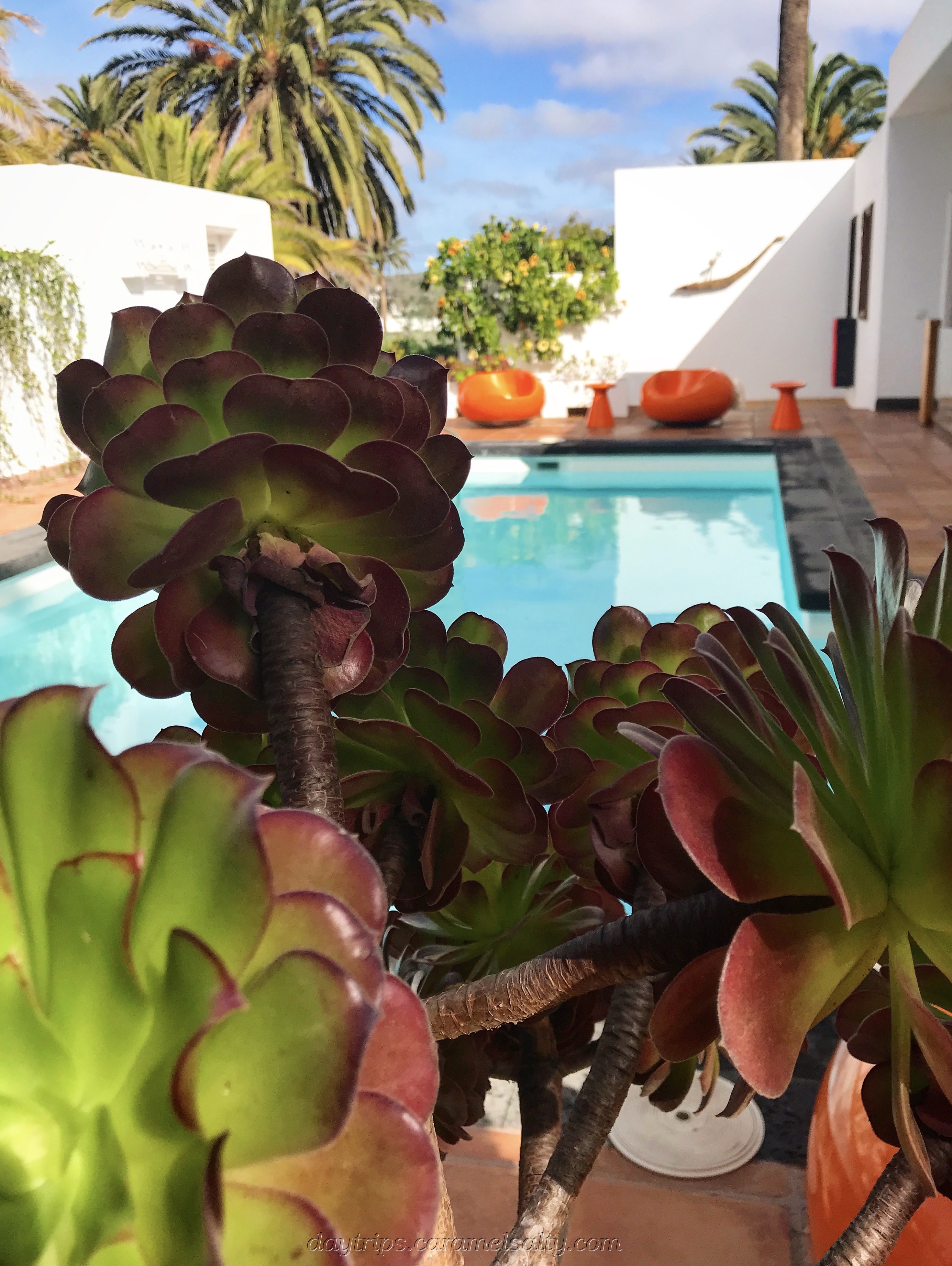
Hária – Wandering through Lanzarote’s Valley of a 1000 Palms
Valleys with palms in Lanzarote? Seems very unlikely, when all I’ve seen the past few days are bare rocky mountains. So let’s see if I’m in for a treat today.
- Start of Day Trip – Estación de Guaguas, Arrecife.
- Cost of Day Out – Cheap (£)
From Punta Mujeres (my other daytrip) the bus climbs steeply up towards Hária. This is unsurprising, as Hária is set amongst the tallest mountain range in Lanzarote, the Risco de Famara. Which means I get some fabulous views of the coast line stretching between the seaside towns of Punta Mujeres to Arrieta.

When I start glimpsing palm trees, I deduce that I’m approaching Hária. Apparently it’s Hária’s tradition of planting a palm tree for every child born, one for a female and two for a male child, that has resulted in the abundance of palm trees and its very fitting monicker.
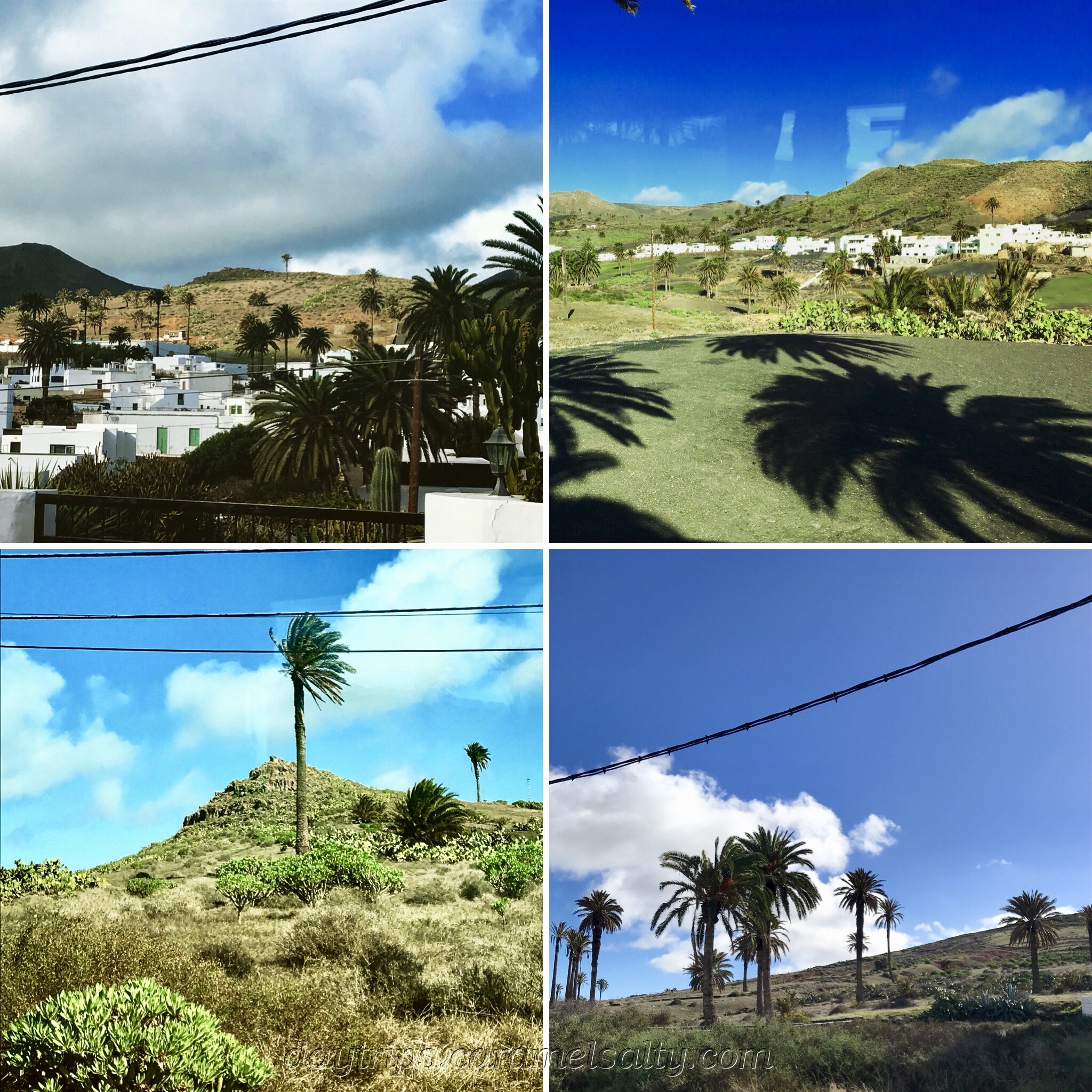
On exiting the bus, I backtrack to the start of the village and work my way up. The town is very compact. In a few minutes I’ve located
- both it’s pretty churches, Ermita de San Juan and Iglesia de la Encarnación,
- both it’s charming plazas, Plaza Léon y Castillo and Plaza de la Constitución
- the Ayuntamiento (Town Hall).
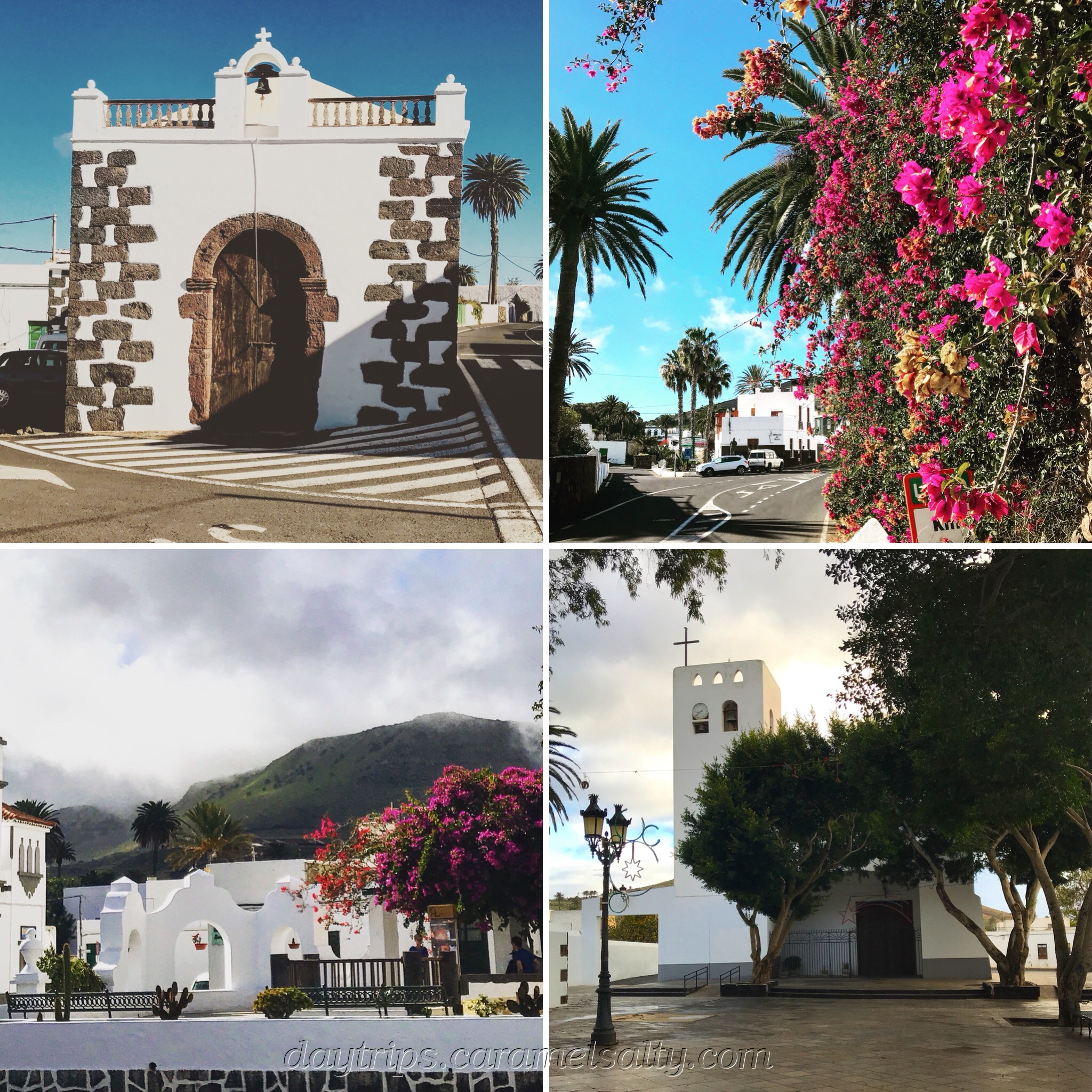
From Plaza de la Constitución, I detect very foggy mountain tops. Undeterred, I commence walk #5 (Hária to El Bosquecillo) from my book of walks. Very shortly, I’ve left the palm filled village and am walking up Calle Rincon de Aganada. It’s a dirt track and an easy ascent. Soon I’m at the Mirador.
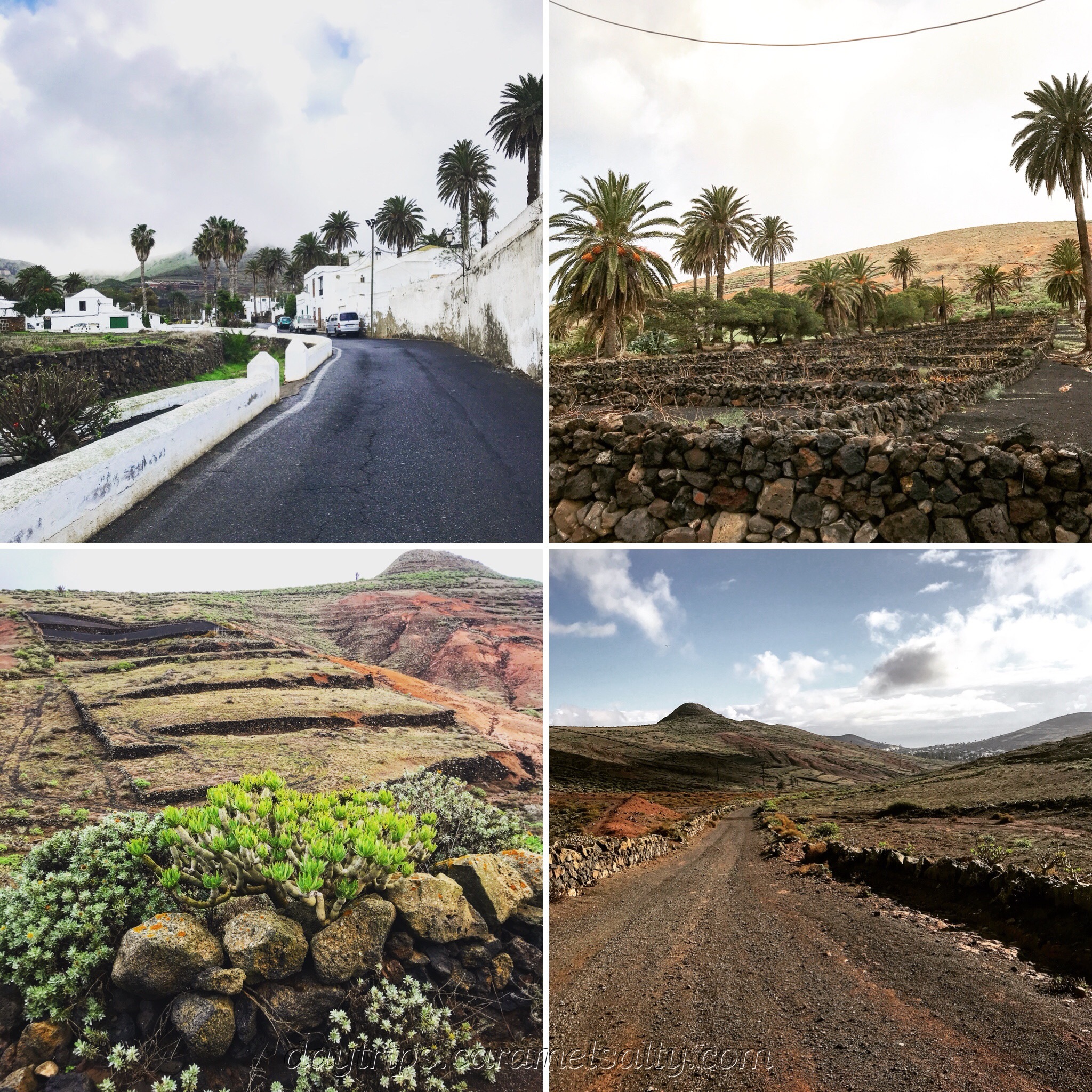
I don’t think I’m unlucky with the weather. The damp mist blowing in from the sea must be a common occurrence to help create all this greenery. And its cooling effect is a welcome relief to the last few days of heat and aridness.
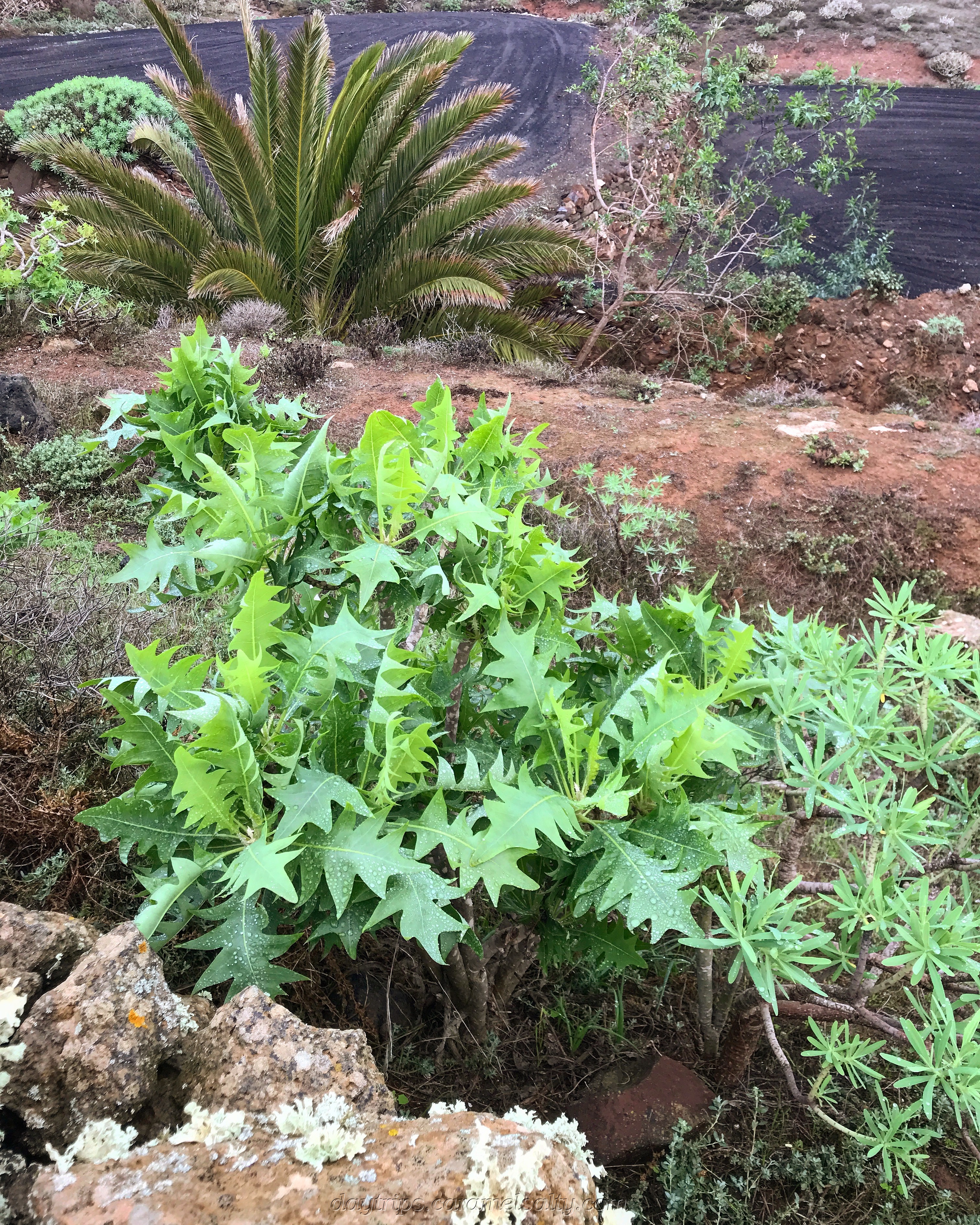
I am deliberately walking to the Mirador slowly, hoping the mist will lift. Consequently, I have time to pay close attention to the flora and fauna. The variety is incredible. And I hear at least 5 different bird calls. I also spot a hoopoe, my birdwatcher nephew tells me, on receiving my descriptive text.
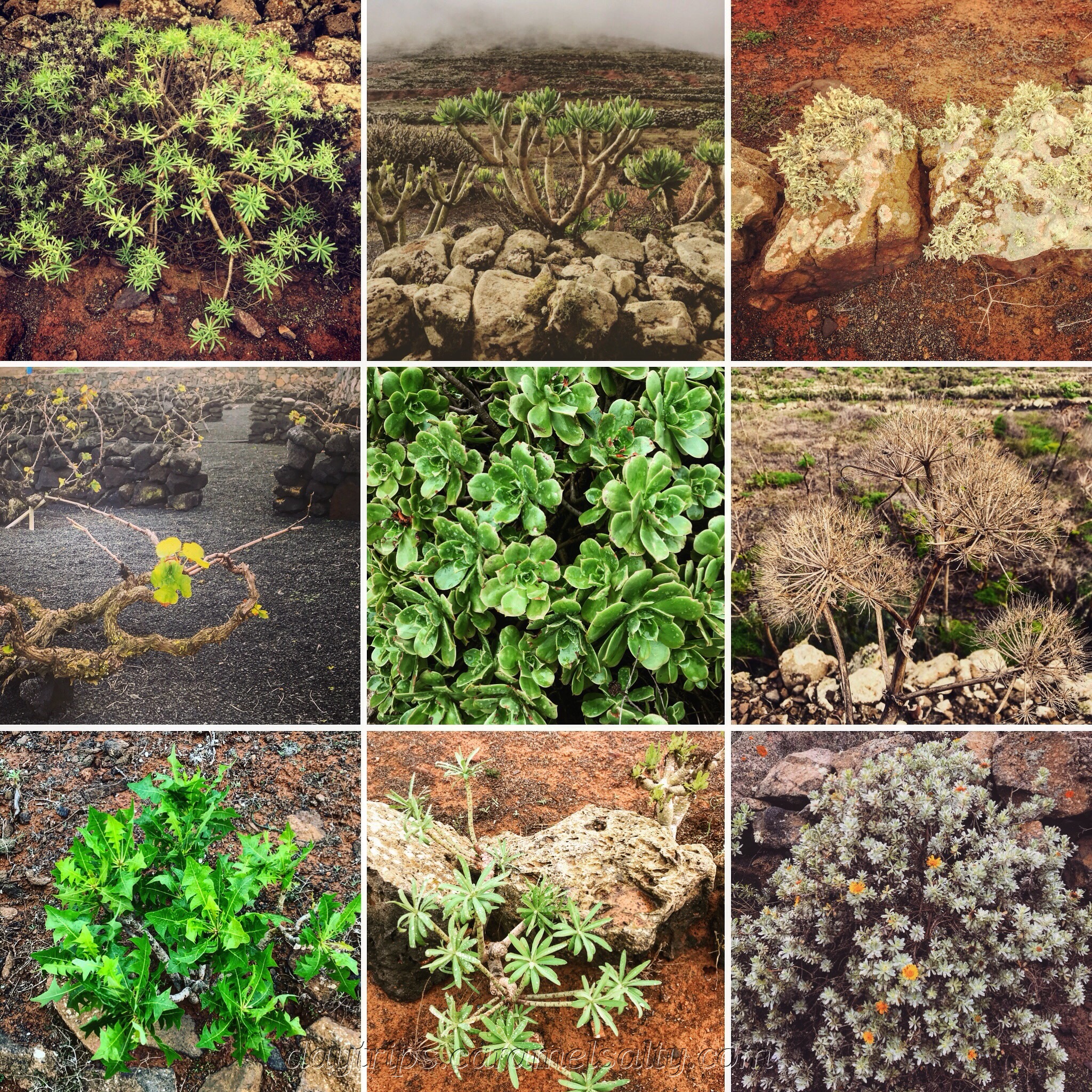
Alas, the view is still obscured from the Mirador. So I continue on, walking back on myself along Calle Rincon de Aganada, under Montana Ganda. It’s just as well that the persistent mist camouflages the radio masts on its summit, whilst at eye level, I continue to enjoy the vegetation.
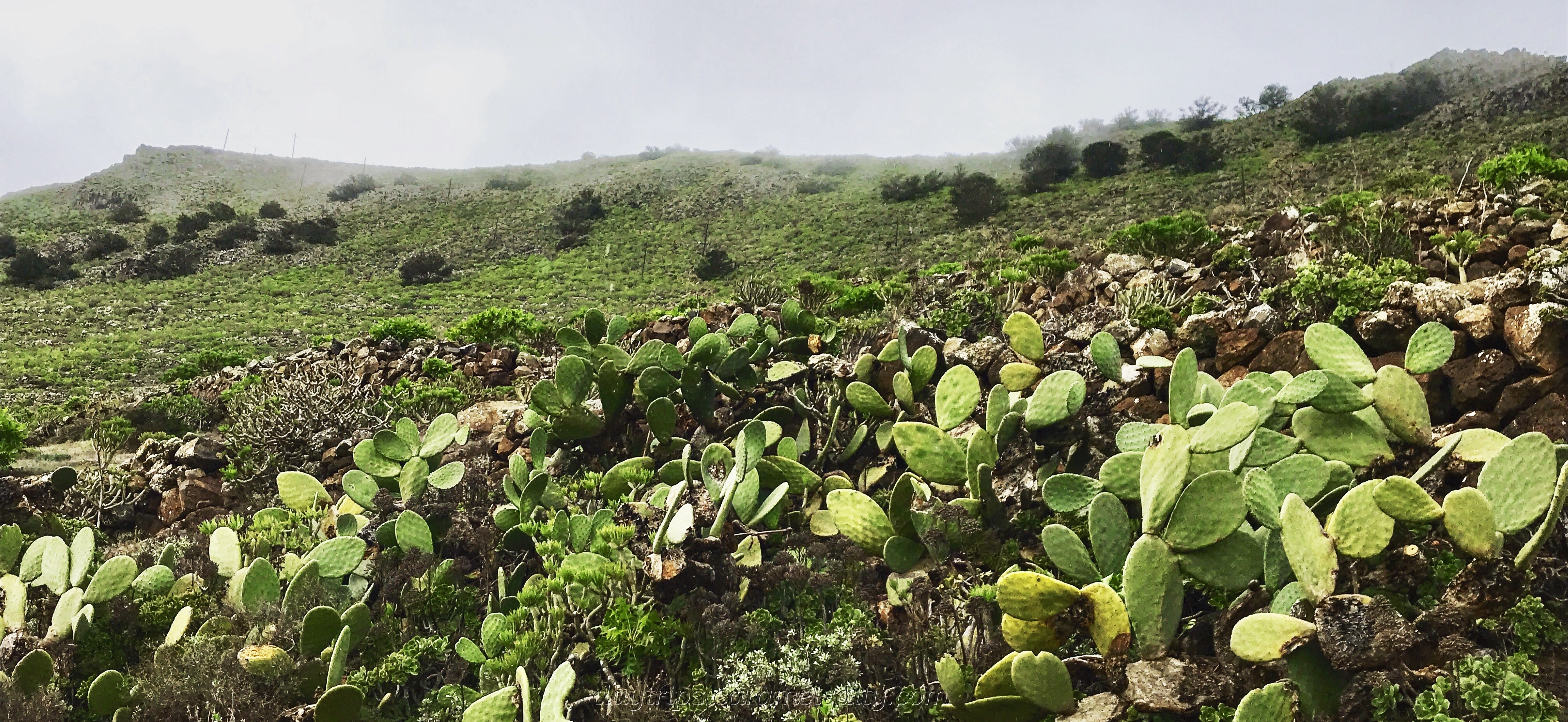
The bleating of goats alerts me to a goat farm below. I also realise that Hária is a lot bigger than I imagined, stretching out in the valley below. It is the 2nd most populated town in Lanzarote, after Teguise. But one wouldn’t think so when wandering around the quiet town.
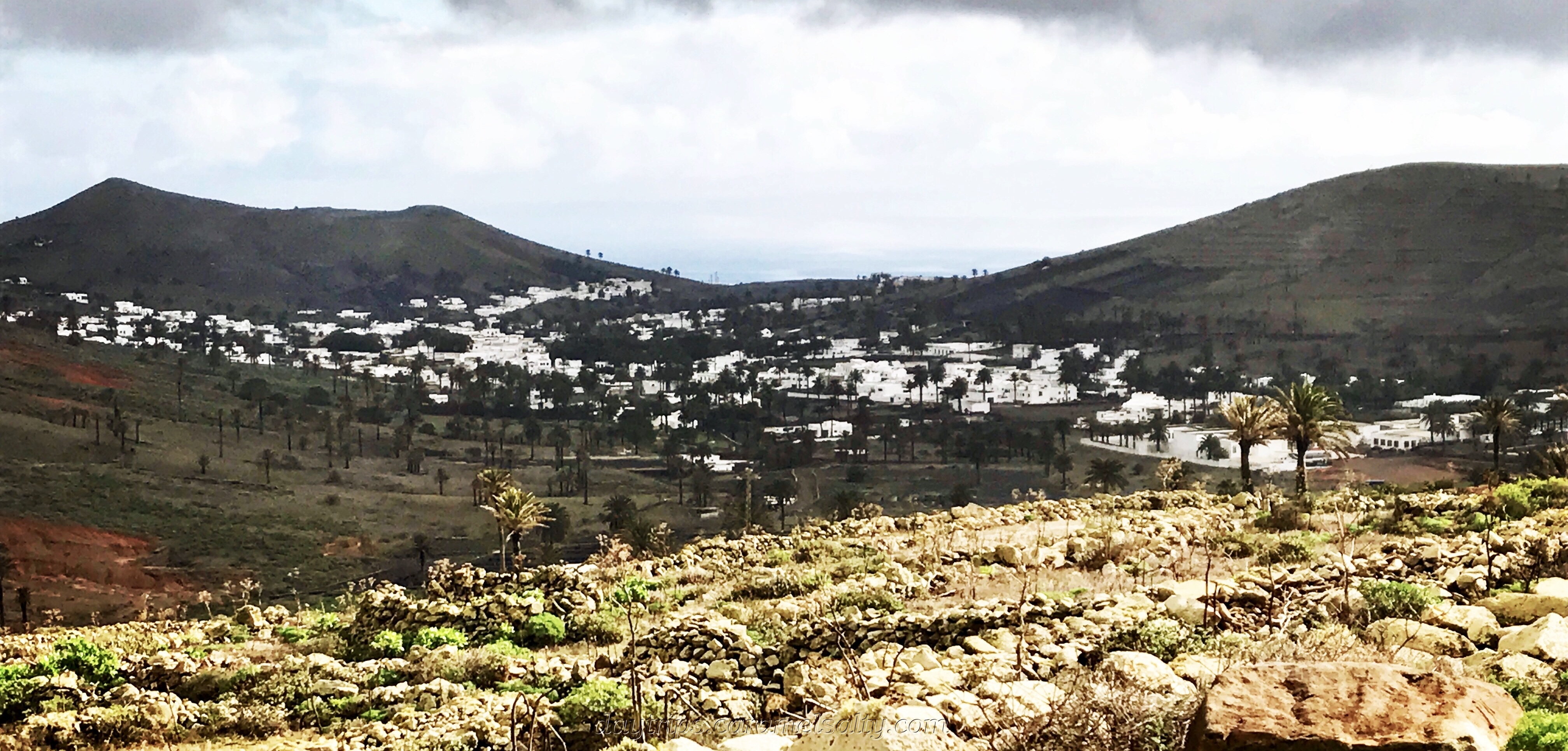
I reach the first uphill section of the walk. It’s a narrow, stoney path. It’s muddier today for the rain last night. But it’s not a difficult climb, with encouraging views back down the valley.
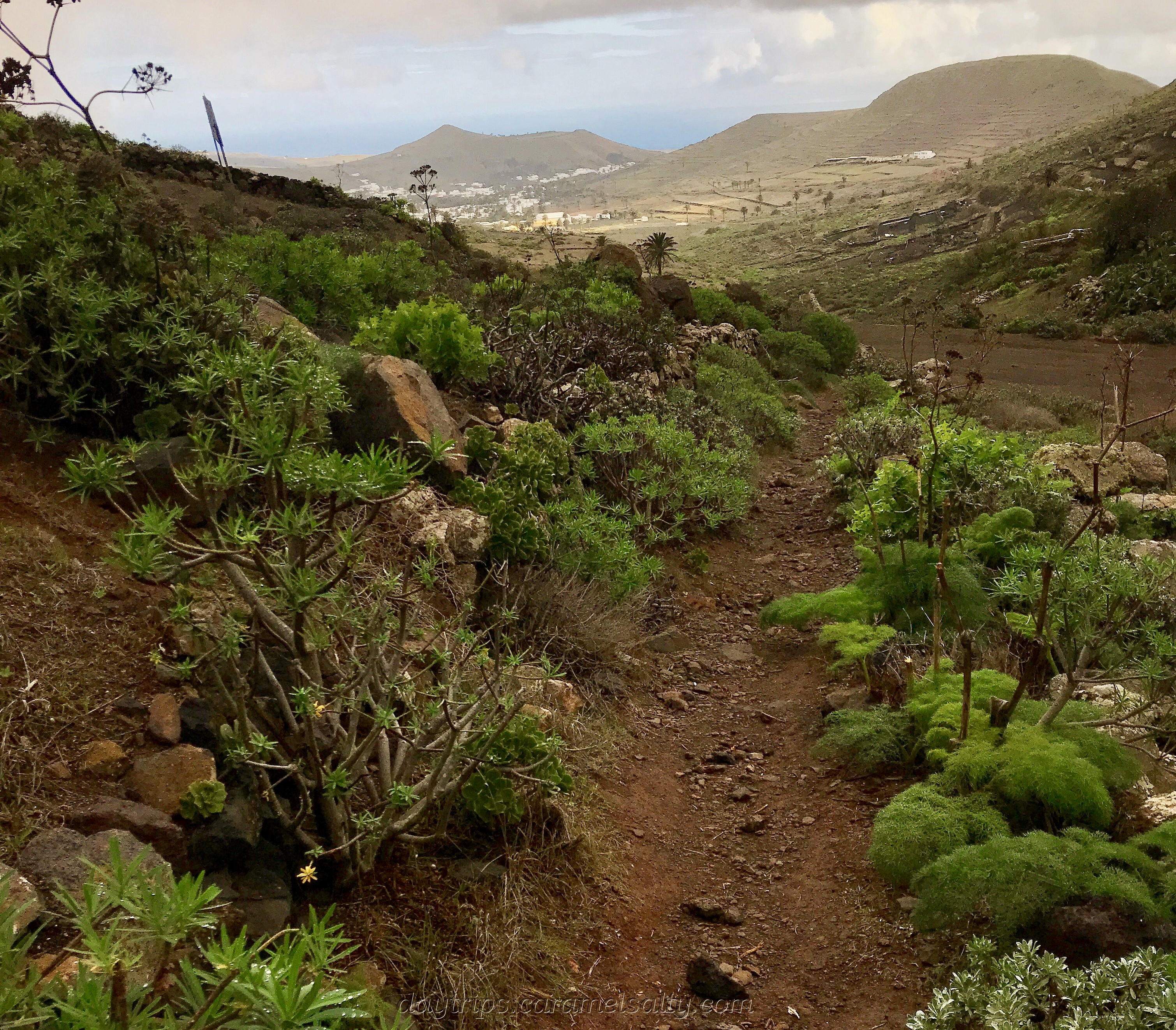
The walk mentions woods half way up the ascent. It’s unlike an English wood. But it’s certainly the most number of trees I’ve seen grouped together in Lanzarote. And once I climb above the “woods”, I enjoy the splendid views back down the valley.
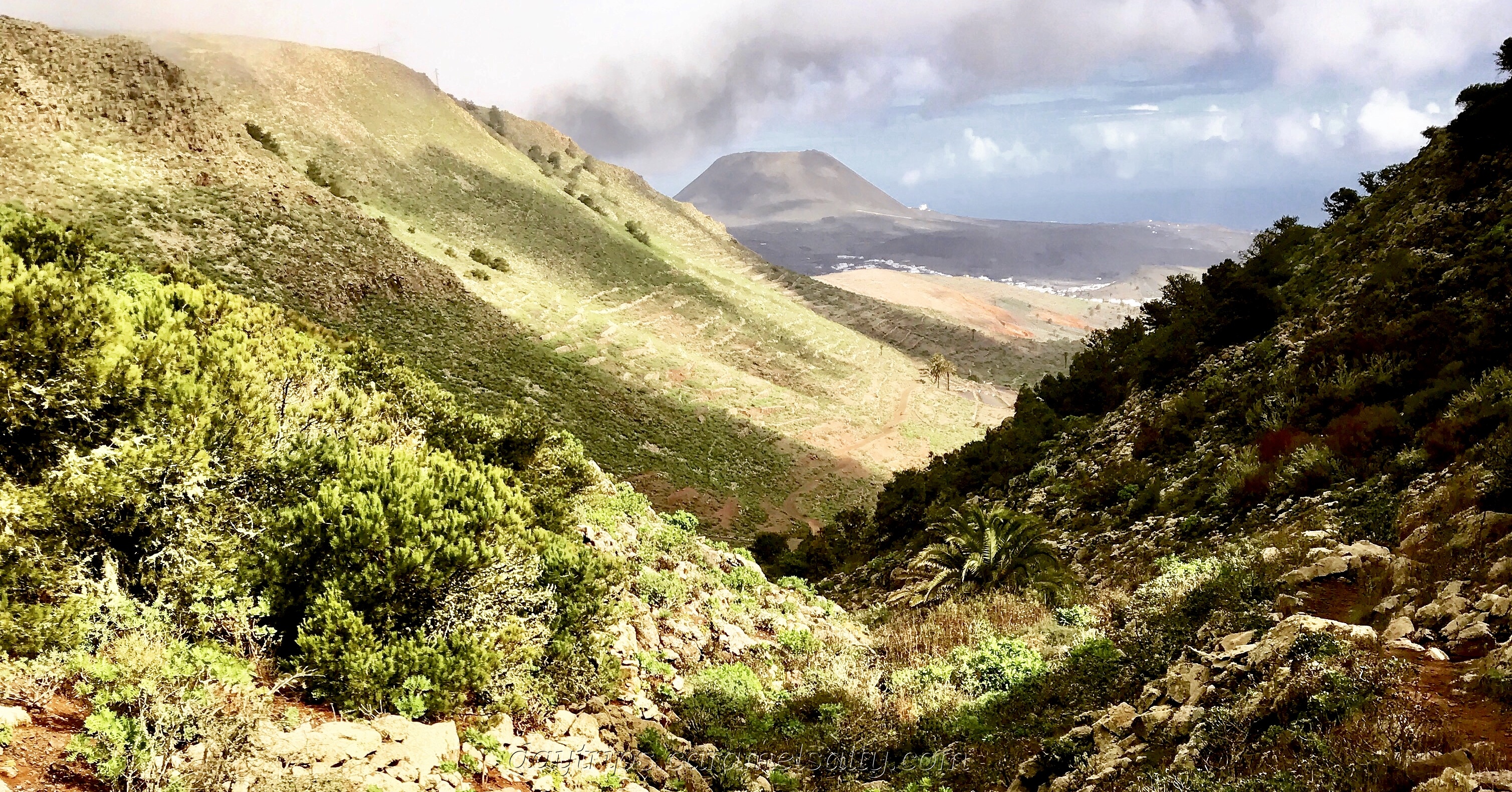
Now I come to my foggy challenge, still sweeping in at the top. The picnic spot by the Mirador Bosquecillo is gloomy, damp and barely visible. I’d always thought the British were the best at enduring bad weather. However the 2 Spaniards continuing with their barbecue, complete with portable barbecue, in these conditions, take the cake.

I retrace my steps. I’m hoping that the weather clears by the time I get back to the first Mirador. I speed back to the gap in the wall that is the entrance to the Mirador, wondering what panorama awaits me on the other side.
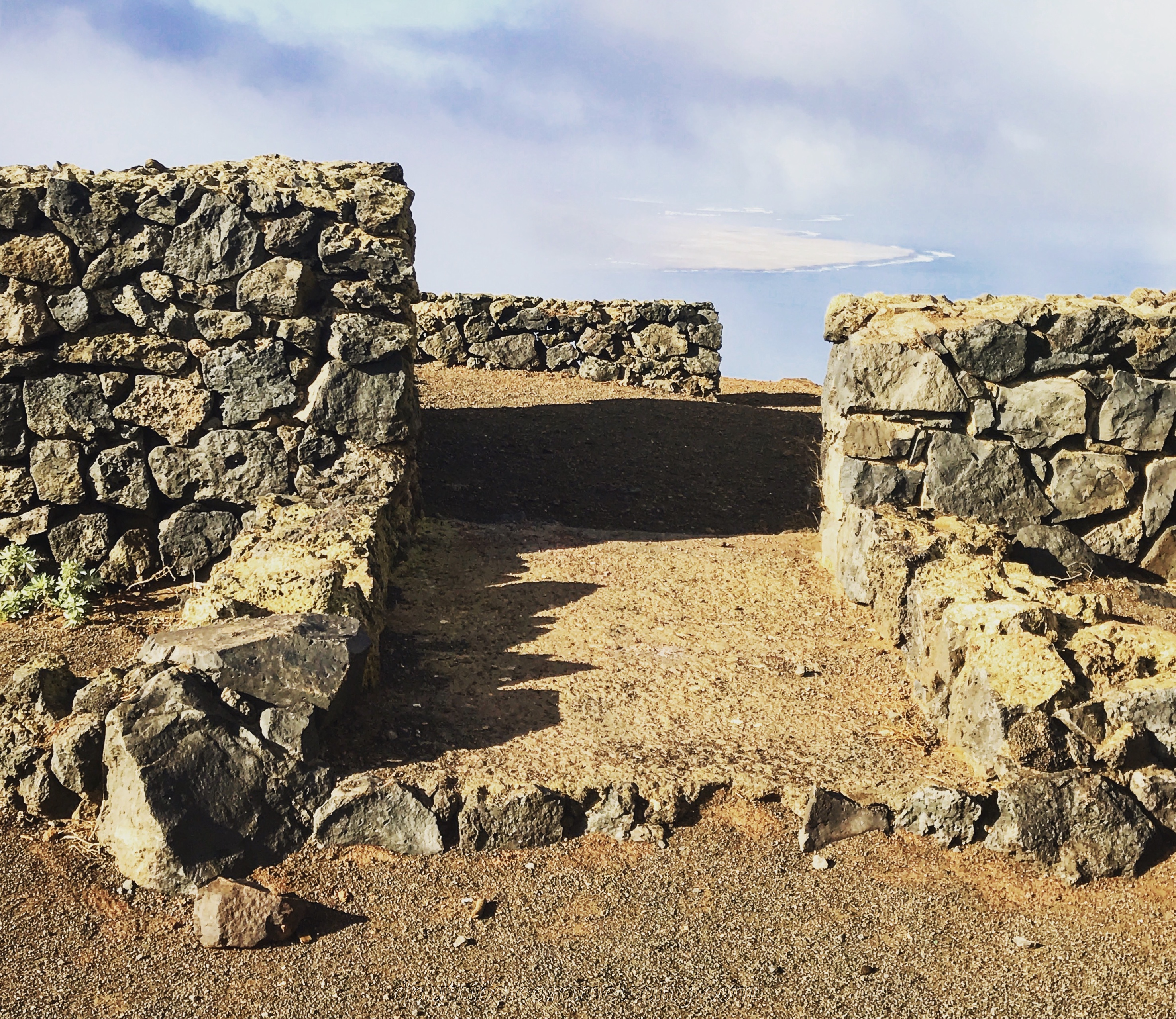
Whilst circular walks are economical, I do think retracing a walk gives a different perspective of everything I’ve just walked past. In the now brighter light, I’m able to appreciate the deep terracotta hills I hadn’t noticed before.

My luck has held. The clouds have lifted. Stepping through the gap in the wall is like walking into the Tardis. Much bigger and more awesome on the other side. Way down below, is Caleta Famera, which I visit another day.

After all that wandering in the fog, I look forward to a nourishing lunch. With a rather brusque Canarian service, I am served an Ensalada de Canaria at the Bar Cafetaria El Rincon de Quino. The salad contains gofio, the first time I’ve ever tried it.
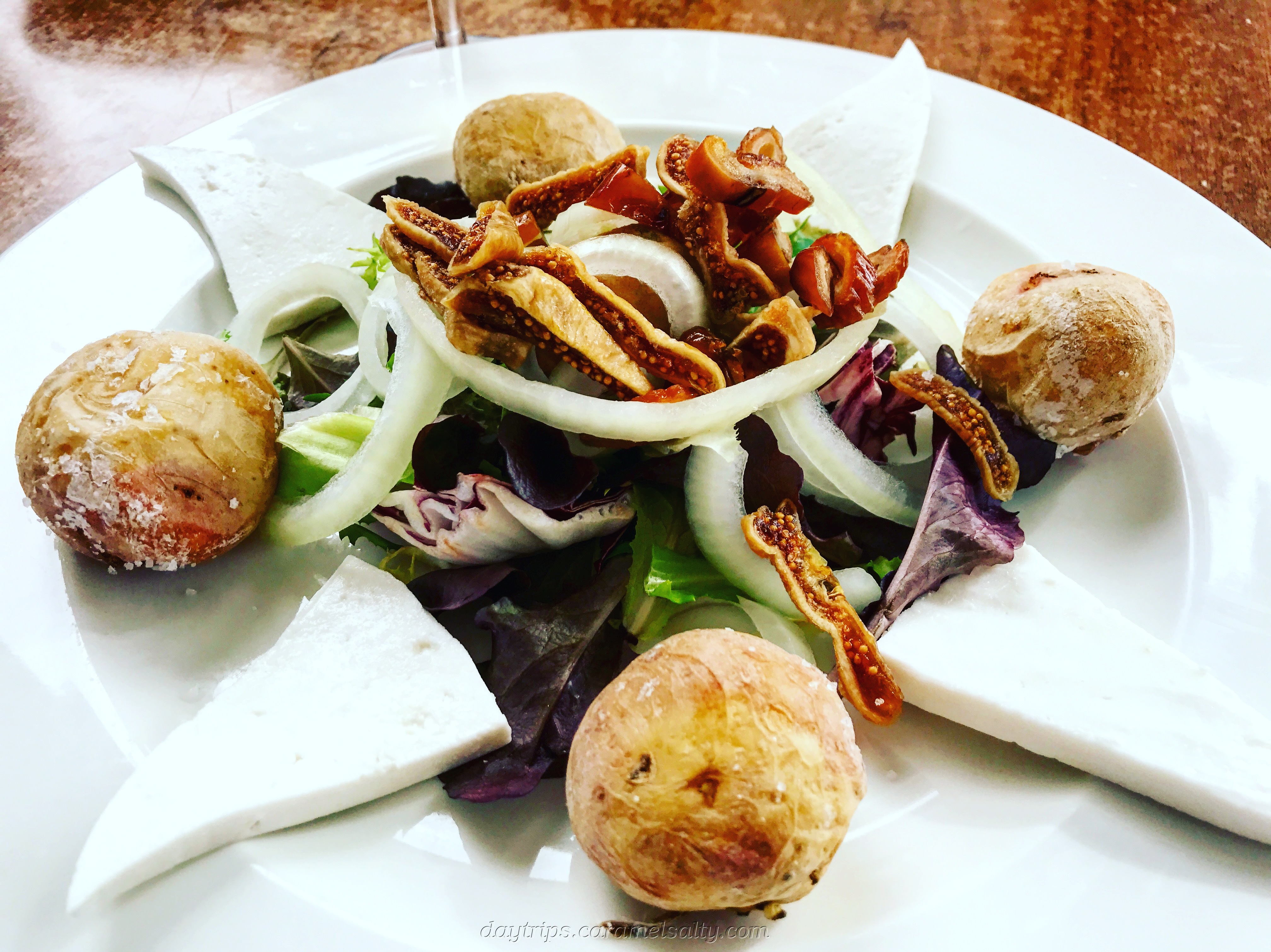
Once I’m rested, it’s time for an architectural feast. César Manrique made Haria his home during the latter part of his life. I meander through back roads towards the musuem, enjoying Hária’s sun bleached doors. I learn from a fellow traveller on the return bus, that in Lanzarote, doors inland are painted green, and blue by the coast.
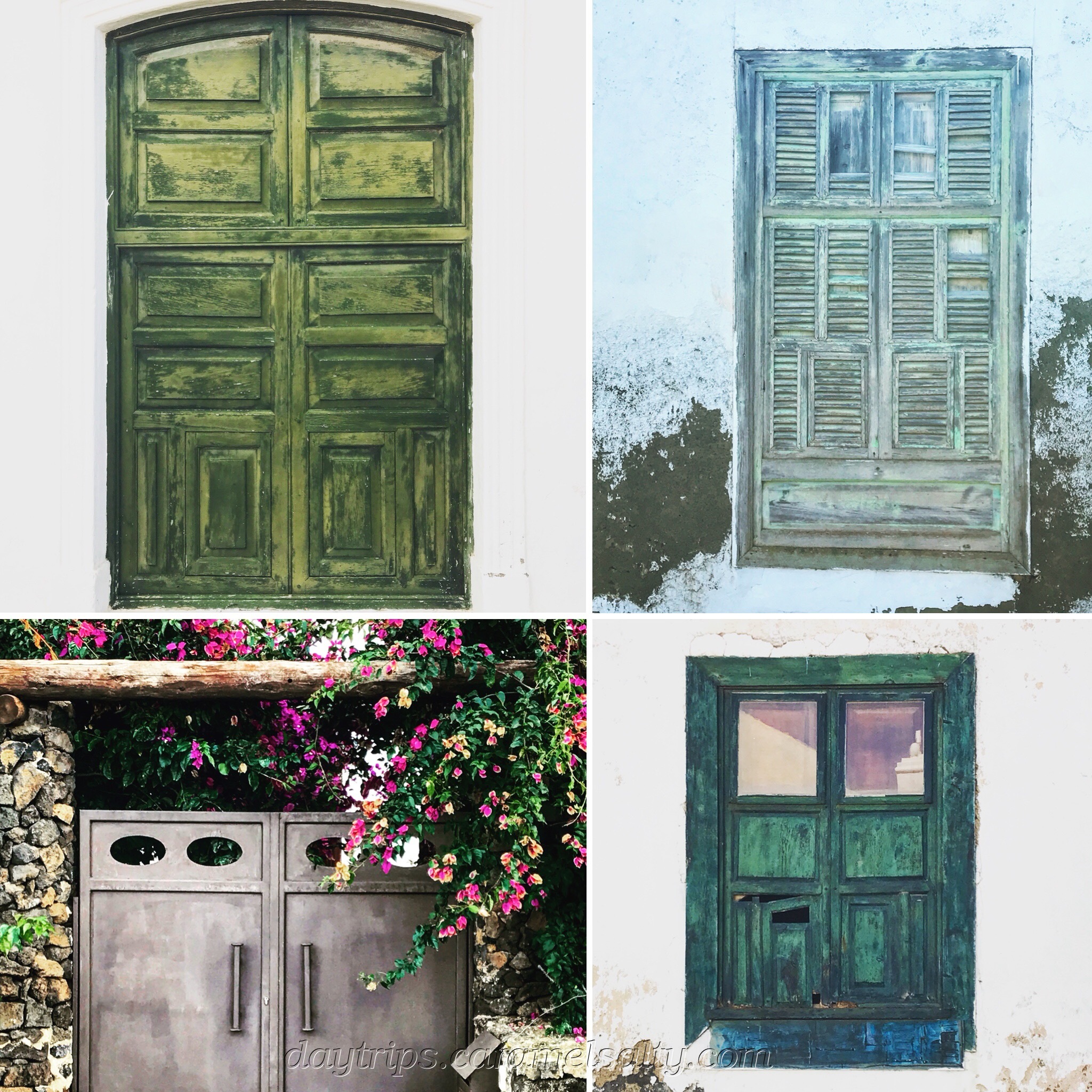
I spot the back of Manrique’s house from Calle César Manrique. It’s in a serene setting surrounded by mountains. From over the garden walls, I can see that the garden is covered in the same black volcanic ash, called picon, which is all over the island.

My enduring impression of the César Manrique House Museum is one of an airy open plan house, with personal touches such as photos and clothes still around, an inviting swimming pool and glass walled bathrooms, its privacy protected by plants. A refreshing fusion of indoors and outdoors.
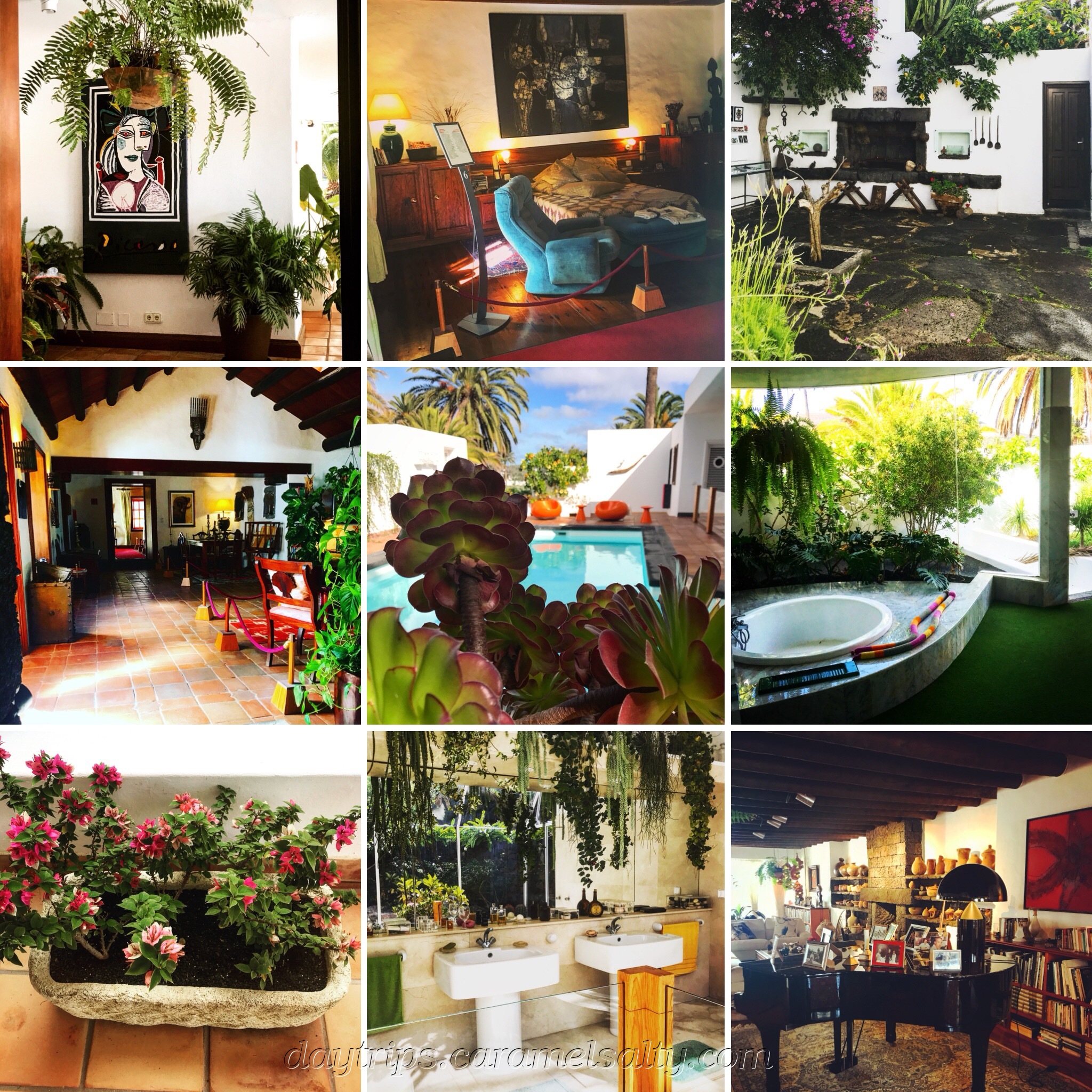
Would I go back to Hária? Most definitely yes. If not to redo the walk on a less foggy day, but to also enjoy those palm trees again. All 1000 of them, and more, I’m sure.
Here’s How I Did Everything
- Book of Lanzarote Walks – My Lanzarote by John Kelly (a.k.a the Happyhiker.co.uk). £3.50 for a Kindle version.
- Timetable for the Hária bus.
- Hours and entrance fees for the César Manrique House Museum. The combined ticket with the Fundación gets me a discounted entry.
One thought on “Hária – Wandering through Lanzarote’s Valley of a 1000 Palms”
Very informative and colourful account of a quite different side of the island.